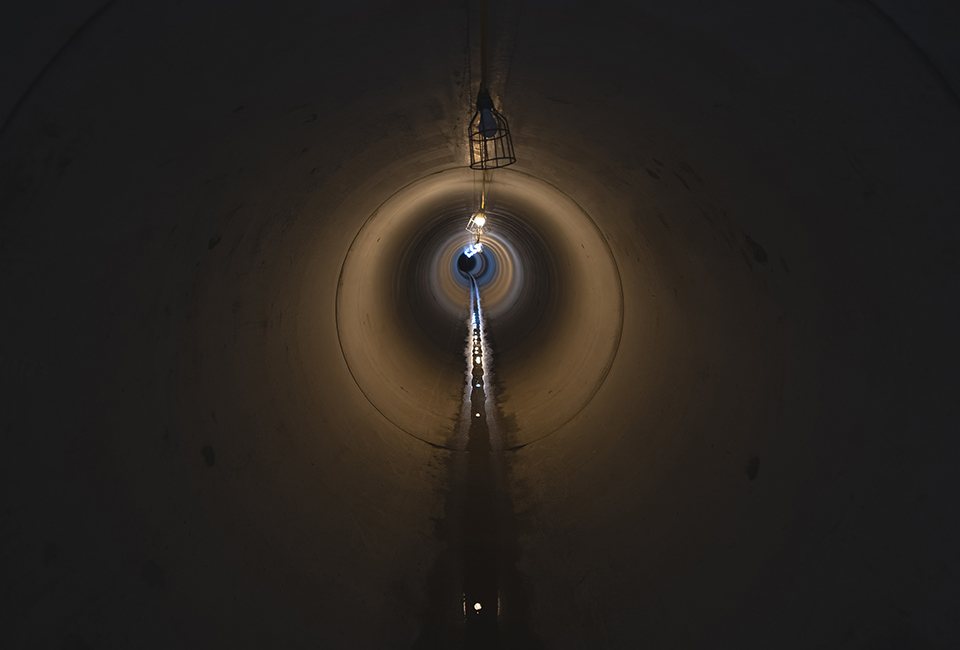In Ilkley, we’ve just finished building a huge new sewer, helping us deal with more wastewater. So we use storm overflows less often, helping to make the river Wharfe cleaner and safer.
Our new sewer in Ilkley
We’ve invested £15 million in building a new sewer in Ilkley to reduce discharge into the river Wharfe. Our new 835 metre sewer has been built underneath the A65 in Ilkley and can hold up to 3.4 million litres of wastewater. Impressive.
What difference will it make?
Discharges from Rivadale storm overflow will be happen around 40% less often and the volume of wastewater discharged during those events will be halved, improving water quality in the river Wharfe, which is home to the UK’s first inland bathing water on the Wharfe in Ilkley.
We’re proud that Yorkshire is home to the first inland bathing water and since it was granted this status, we’ve been keen to play our part in improving water quality. This includes working on a variety of projects to make improvements to water quality in the river and reduce the impact of our operations. This new interceptor sewer is the largest of these projects and it will make a difference to the number of discharges into the river.
The new sewer is just the start of our investments in Ilkley, we’ve already started work at Ilkley wastewater treatment works and Ben Rhydding wastewater treatment works to further reduce discharges into the river and are planning investment in a new wetland to further reduce our impact on the river and generate a biodiversity gain.
Our interceptor sewer project was extended in July 2023, with an additional 191 metres (1.5-metre diameter) sewer constructed between Wharfe View Car and the riverbank off Castle Road. This section of tunnel has been completed and will be commissioned in 2026 to ensure our Rivadale storm overflow meets the new government targets of one discharge per bathing water season, nine years ahead of the 2035 deadline.
What we're doing to improve Yorkshire's bathing water
What are storm overflows and why do we need them?
Our network has three sewer types:
- Foul sewers: Carry waste from toilets, sinks, and washing machines.
- Surface water sewers: Handle rainwater from pavements, roofs, and roads.
- Combined sewers: Mix of foul and surface water.
Foul and combined sewers send wastewater to treatment plants where it's cleaned. Surface water sewers drain into local watercourses.
Given Yorkshire’s unpredictable rain, storm overflows help manage excess water by letting heavily diluted wastewater flow into watercourses when the system is overloaded. Most of these overflows have basic treatment like screens to handle the discharge.
We know our storm overflows operate more often than we or our customers would like, and reducing discharges is a priority for us. That’s what makes projects like the new Ilkley sewer so important to all of us, as well as the environment. We are in the process of investing £180m across Yorkshire to reduce discharges from overflows and have submitted plans to Ofwat outlining a £1.4bn investment to further reduce overflows between 2025 and 2030.
What we're doing to reduce storm overflows
More from us
Storm overflows
Find out what stormover flows are, why we have them and how they work.


Our storm overflow map
See whether any overflows are currently operating as well as the date, time and duration of the last time it operated.
River monitoring
Read about our solar-powered monitors to keep an eye on our wastewater outfalls.

Doing right by Yorkshire
From fixing leaks to making new wetlands. From helping customers struggling with bills, to giving back by helping communities thrive… We want to do right by you, by doing right by Yorkshire.


